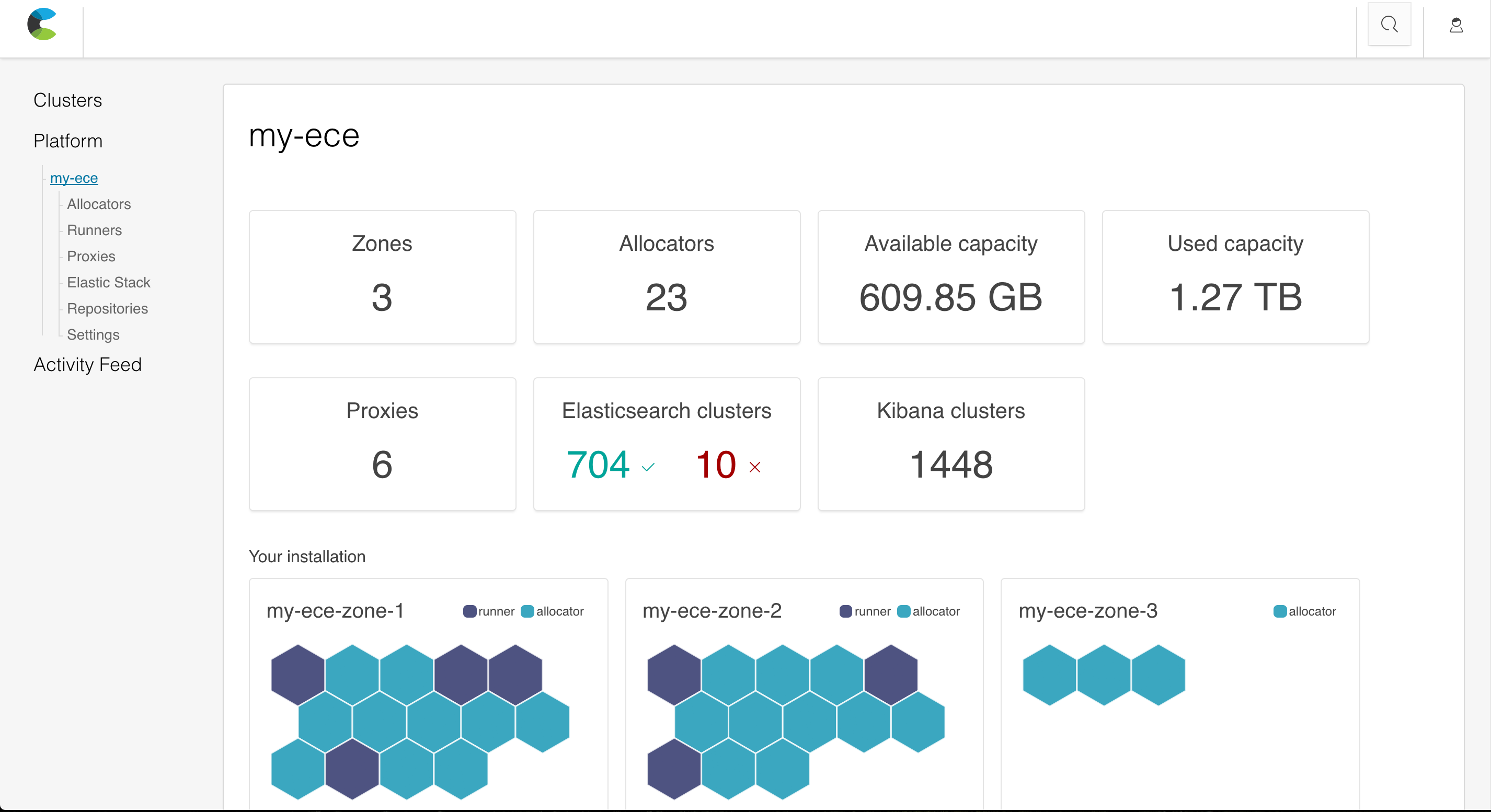Elastic Cloud Enterprise 1.1.0 released
We are pleased to announce that ECE 1.1 is available to download today! ECE 1.1 is packed with important enhancements and bug fixes, so please read on. You can find the release notes for ECE 1.1 here.
Support for Elastic Stack 6.0
One of the big highlights of this release is support for the hot-off-the-press 6.0 release which was announced earlier today. Elastic Stack 6.0 brings loads of new features across all products and there is something in it for every use case. So, naturally, we want our ECE users to be able to spin up new 6.0 clusters right away. Generally speaking, new stack releases are made available to ECE users via stack packs and do not require an upgrade to ECE itself. With 6.0 however, there are a few important changes that required some backend modifications to ECE, most notably node to node TLS encryption, which ECE automatically enables and manages for you. For all the 6.0 goodness and upgrade instructions, please review these blogs:
Note: The Elasticsearch transport client is not supported at this point for accessing 6.0 Elasticsearch clusters managed by ECE. We are working on bringing back support for this, but we highly recommend for users to move to the high level Java REST client.
Improved usability and a shiny new UI
The ECE UI gets a number of important usability improvement and brand new look and feel! On the usability front, we’ve added a whole new platform page that gives a clear and concise view about your entire installation, the health of the various services and the overall utilization across all hosts. In addition, we’ve revised the cluster overview page to provide more detailed Elasticsearch health information and enhanced the activity view to clearly present the previous and current changes a cluster is undergoing.
We’re also introducing a completely new look and feel which provides a frictionless experience to navigate to your favorite cluster administration features. More importantly, it makes ECE accessible to everyone! The design uses high contrast, color-blind safe palettes and proper aria labels to improve accessibility. The UI is based on an internal React component library called Elastic UI and we'll go into more detail in upcoming blogs, so stay tuned! For now, I'll leave you with a teaser:

Support for private docker registries
By default, Elastic Cloud Enterprise (ECE) pulls the various ECE container images for Elasticsearch, Kibana and other ECE artifacts from the Elastic Docker registry (docker.elastic.co). For deployments that use an air-gapped environment and have no access to public internet, ECE will not be able to pull these images, consequently failing the installation and not being able to operate correctly.
In 1.1, we've added support for configuring your own private docker registry. This still means you need to have a machine with internet access to initially download ECE container images. Once they are downloaded locally, you can then push them to your private docker registry and use this as an image source for all your ECE hosts in the air-gapped environment. After this initial set up, your nodes will not need access to any services in the public internet.
Improved resource usage when applying configuration changes
ECE 1.1 comes with a new, rolling-grow-and-shrink strategy that allows users to apply a configuration change to a cluster using less resources. For large clusters this significantly reduces the amount of available capacity that is required to apply a layout change or cluster resize operation. Previously, if you had to make such a configuration change, you had to use the “Create new” strategy which required at least twice your cluster’s capacity to make these changes. With the rolling-grow-and-shrink strategy, you only need enough capacity to spin up a single extra node. With this method, a new Elasticsearch node is created with the updated configuration and the data is migrated to it from an existing node in the cluster. Once the migration is complete, the old node is shutdown and the process repeats until all nodes (and data) in the cluster are successfully migrated over to apply the new changes.

Documentation: Production playbook
Based on user feedback, we've made some changes to the ECE documentation. We've recently added a reworked playbook for production that supports small, medium and large deployment examples. Planning to set up a production system? Start with this playbook. These sections include the steps necessary for each example, sample commands, and new illustrations.
Bug fixes and operational improvements
There are several bug fixes in ECE 1.1. I've highlighted a few ones here:
- The UI now shows the correct disk capacity when you use the API to change the default RAM-to-storage ratio.
- The system will now validate if there is enough capacity before running the create and allocate steps.
Upgrading from 1.0 to 1.1
Existing ECE installations on versions 1.0.x can be live upgraded to version 1.1.0.